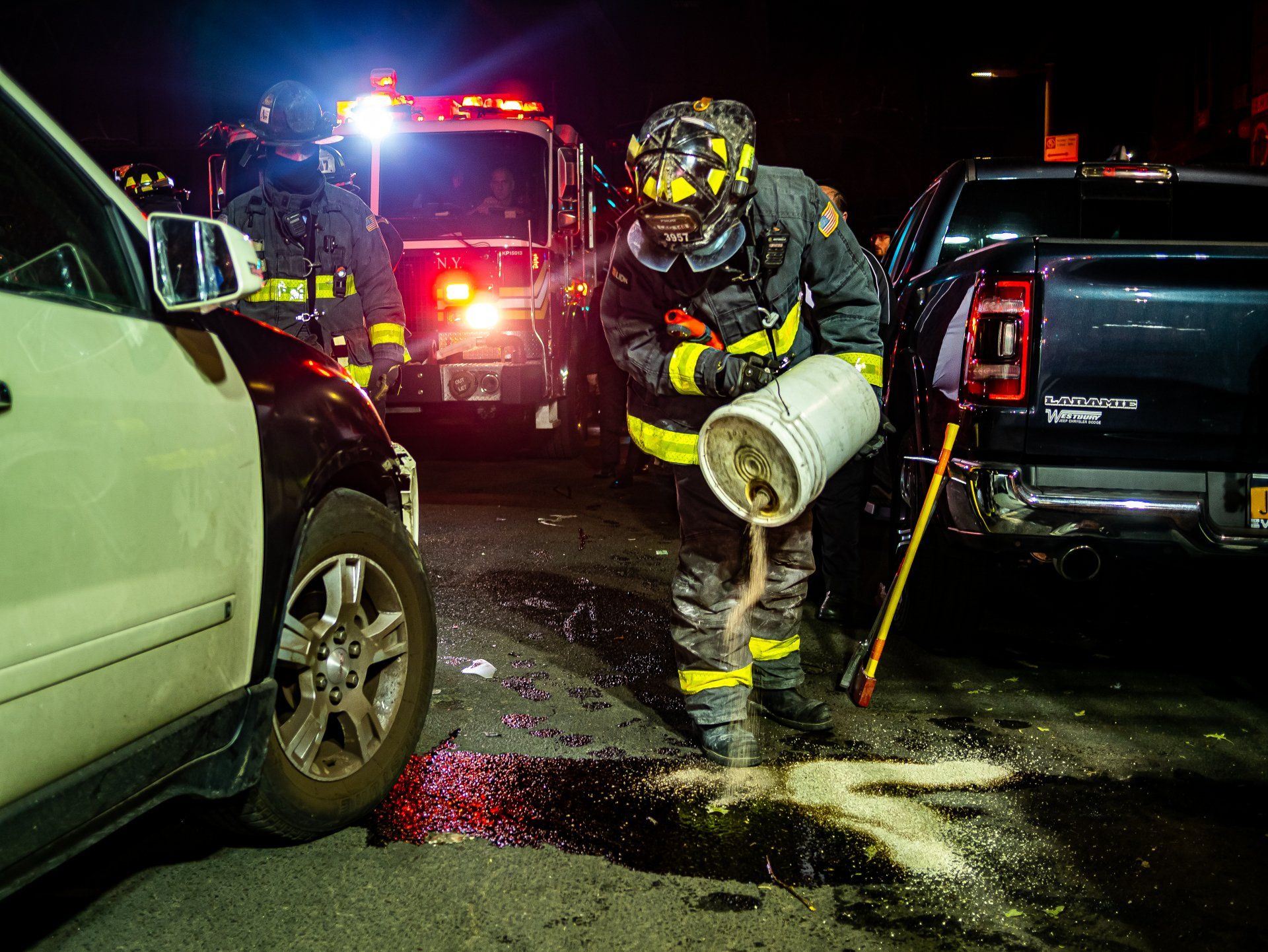Lawrence Hatfield – Key Note Speaker for the Opening of Court / Red Mass
AFGHANISTAN AND THE RULE OF LAW
The invitation to the Red Mass announced my topic this morning as the “Rule of Law in Afghanistan.” As an officer with Hamilton’s Argyll and Sutherland Highlanders of Canada, I recently spent 8 months in Afghanistan with another Argyll officer helping to train the Afghan National Army. Because I am also a personal injury lawyer here in Hamilton, the topic of the “Rule of Law in Afghanistan”, I suppose, seemed an obvious one for a lawyer and a soldier but I am certain that most of you would be hard-pressed, given the almost daily coverage of Canada’s mission, to think that the rule of law had anything to do with Afghanistan. I will not disabuse you of that notion. My topic is more centred on the rule of law and Ontario than it is on Afghanistan although I will certainly touch upon it. Imagine: Warring factionalism, invading armies, hostile groups, the widespread use of political violence, the tentative hold of the administration of justice, political instability, and the use of public execution to make brutal examples to an uncertain populace.
Together, they present an image of war-torn Afghanistan and provide the numerous critics of the mission with plentiful and stark evidence to demand an early end to it. But, I am not referring to a far-off place. Rather, I am taking you back to this province and, indeed, to this local area almost 200 years ago. We are coming up to the bicentennial of the War of 1812 and, we are not far from such scenes. Let me set the picture.
In June of 1812 Canada was invaded…. two American armies pushed into Upper Canada, one across the Niagara River another from the Detroit. Unfortunately some members of the Upper Canadian parliament deserted to the Americans and formed a renegade Corps of Canadian Volunteers that committed depredations throughout this area and burned Niagara-on-the-Lake. In 1813 Hamilton was under threat of the American army that was pushing across the Niagara peninsula. Hamilton’s last ditch defenses consisted of a rag-tag group of refugees, British military units, local militia, and natives camped around the present site of Dundurn Castle awaiting a final onslaught. Twice during the spring and summer of 1813, American amphibious forces captured the capital York (now Toronto) and liberated the jail. The situation was tenuous and the outcome in doubt. In December 1813, the British military administrator of the province decided to hold a special commission on cases of treason in order “to make examples.” The commission was convened at Ancaster in May 1814 In the end, of the 17 convicted, 8 were executed on 20 July 1814 near the corner of York Boulevard and Locke Street. These men were hanged, drawn, and quartered.
Now, what does this little lesson in local and provincial history have to do with Afghanistan and the rule of law? It provides a point of comparison and a perspective to view our role that is the role of the legal community, within this society.
The invitation to the Red Mass quotes the preamble to the Canadian Charter of Rights and Freedoms whereby “Canada is founded upon principles that recognize the supremacy of God and the rule of law….” Principles that recognize … the rule of law” it’s a phrase that bears repeating. At the same time of our local instability, Napoleon a man who knew something of disorder and order in society but understood clearly, as he put it: There is no authority without justice.”
Canadian soldiers are used to the obvious characteristics of Afghanistan – the heat, the cold, and the incessant wind. You get used to them, you adapt to them, and you endure them. But, there are things that cannot be endured. There is an old saying that there is no justice without the sword. This is true but I can tell you that with just the sword, there is also no justice.
In the seemingly endless debate about the mission in Afghanistan, commentators note the need for clean water, proper sanitation facilities, roads and bridges, schools, hospitals, an economy based on something other than opium, and on the list goes. Certain critics want us to concentrate only on these admittedly good things. However, in Kandahar province, this country’s soldiers strive to establish order as a foundation for everything else, for anything else. What is most important? These answers are easy: first is order and a close second is the rule of law. Law which the inhabitants of that country accept over the rule of individuals whether they be tribal chieftains, criminals, or thugs of whatever description who know nothing beyond the sword.
My tour in Afghanistan brought home to me that without the rule of law, there is nothing beyond the rule of force. I have seen it in Afghanistan and I have done my modest bit as a soldier to help that society establish a national army to guarantee order. I want to take a moment to briefly explain my job of helping to train the Afghan National Army also known as the ANA.
The ANA is one of the few success stories in Afghanistan as they are in the process of creating a true professional army. This volunteer army is working hard to overcome traditional tribal and ethic loyalties to create a truly national institution that will eventually enable the country to become self sufficient in its own security. Training the Afghan soldiers was a rewarding experience on two unique levels. First was the personal experience of working daily with the Afghan soldiers. The Afghans are natural warriors who have no shortage of courage but rather lack the training, skills and organization of a professional army. Often when we were outside of the camp it would be just myself and another Canadian soldier with a company of 200 Afghan soldiers, there is no question that I trusted them with my life.
Many of my Afghan friends and comrades spent much of the time of the Taliban rule living in refugee camps on the border of Iran or Pakistan. They returned at the fall of the Taliban with hope of returning to and building a better country. They always expressed an appreciation of the assistance we provided. They were impressed that we would leave our country and our families and risk our lives to help them. They are people who have nothing but would literally give you the shirt off their backs. My experience gave me a true appreciation for the Afghan soldier and the Afghan people.
The second rewarding part of my position is that I could see first hand real progress being made with the soldiers I worked with. Every month the quality and quantity of the soldiers in training increased and even more important is that the Afghan military leaders continued to assume more responsibility over time. By no means is the ANA perfect, they still have a long way to go and Canadian troops in Kandahar are sustaining order while the ANA is building. With the ANA I believe they are doing it the right way, not the quickest, cheapest or easiest but the most effective and sustainable over the long term.
But with the success of the Afghan Army and the imposition of order must come the rule of law beginning with a professional police force and a legal community dedicated to the principles of the idea of the rule of law.
I have seen a war torn country and I consider myself blessed to live in a country governed by the rule of law and to work in profession, which embodies the reality of the rule of law over the rule of force. The combination of order, political stability, and the rule of law is rare in the world, and 200 years ago it had not yet sunk firm roots here. Over time, it did, however, it was not perfect but in human society comparison reveals how good it is.
It was accomplished through the work of a group of people dedicated to the principles of the rule of law. A group of professionals including such lawyer/soldiers as Allan MacNab in the 1850s. Over the course of the 20th century, this profession has striven daily to ensure that these blessings are maintained in our day-to-day life. And, members of this profession have served militarily to ensure the continuance of this way of life. Members of our legal community have provided the ultimate service and made the ultimate sacrifice.
My own Regiment – the Argylls – was the creation of two soldier lawyers in Hamilton – William Chisholm and Alexander Logie. During the Second World War both of Hamilton’s esteemed infantry regiments Argylls and the Royal Hamilton Light Infantry affectionately known as the Rileys were led by members of the legal profession. In my own regiment I note Captain Mac Smith, a practicing lawyer who months before completing his PhD dropped everything, and took a reduction in rank to join the regiment off to war. On April 8th, 1945 a single bullet found Captain Smith in the final days of the war while he was attempting to cross the Ems River, in Germany…. He died instantly. A commanding officer of my regiment LCol Fred Wigle, a Hamiltonian and a member of one of Hamilton’s famous legal families gave his life overseas as well. Another prominent member of our legal community the Honourable Mr Justice and Lieutenant Colonel Hugh Arrell was a wartime commanding officer of the Royal Hamilton Light Infantry he was in fact the CO who brought the Rileys back home to Hamilton at the end of the war.
Members of our profession are noted for their post war military service such as the Honourable Mr Justice Lofchik who as a young man served as a peacekeeper in the Gaza Strip and his son now serves in the Argylls and is currently training to deploy to Afghanistan in the next rotation. Today there are members of our legal community that continue to serve with the Canadian forces. I believe it should be no surprise to anyone here today that Hamilton’s legal community has a proud history of military service. The concept of service to others in ingrained within this community. From the early days of Hamilton to the present, the Hamilton’s legal community has an outstanding reputation of service to country and community. Whether it be International scale such as the missionary work of The Honourable Mr Justice Marshal or on the local level of leading the local soccer team members of our profession volunteer their time, their money, and their talents to help make it a better place. They provide leadership in a wide range of local institutions and always the aim is the greater good of the community.
Jokes about lawyers are a dime a dozen and, no doubt, some may nod in agreement with the recent attack upon lawyers published in Macleans. So be it. But, rare is it that there is not a board, an organization, or a charity, in this community that does not include a member of this legal community. In our profession time is critical, it is measured, billed, docketed and valued and it seems there is just never enough of it. Yet, as a profession, we embody a sense of service…. or duty as we call it in the military – it is just expected. Law School applicants are advised not to apply without a record of community service, law schools themselves have more student organizations focused on community service than any other faculty and young lawyers are expected to continue this involvement upon entering the profession. It is not just expected but assumed that when you enter law you give back. If I were to name the numerous community groups and charities in the Hamilton area such as the Big Brothers , the United way or the YMCA just to mention a few and asked that people stand if they belonged to them, it would not be long before I had standing audience. This sense of service of our community I believe is based on the same fundamentals as our service in Afghanistan. I think this esteemed audience understands that. Our Mission in Afghanistan is hard, it is varied, it is multi-faceted and it brings Canadian soldiers into combat for the first sustained time since Korea.
Over the past 30 or so years, Canadians have come to think we can have justice in the world without the sword and when in Afghanistan we draw the sword, many Canadians are shocked and wonder: whether it is worth it, or whether there is an easier way, or suggest that someone other than Canadians should do it. How this growing debate will unfold, I have no idea. I will say this. From our own experience over the past 200 years, we should realize that the combination of order and the rule of law are the fundamental building blocks for everything else, and they don’t come easily, and they do take time. We didn’t achieve it in 5 years or even 50 years but we did achieve it. Was it worth it? I think about my profession, how I live my life day-to-day, how my wife and I raise our family, and answer yes. When I hear of Canadians leaving Afghanistan I wonder what would have been Allen McNab”s, Mac Smith”s, or Hugh Arrell”s reaction to such notions.
Personally when I think about it I go back to a quote of Thomas Paine (a philosopher of the American revolution) that was posted in my camp in Afghanistan which I would see every time we left the security of camp to conduct operations. It read: “If there must be trouble let it be in my day, that my child may have peace”
Afghanistan is a country that has had a history of war and turmoil. Afghanistan has been locked in Canada’s 1800s for too long to remember. The past 30 years have been particularly brutal. Young AFGHAN soldiers I have trained had no exposure to good government, justice or stability; they have grown up under tyranny, turmoil and war. From communist rule, to the war with the Soviet Union, to civil war and then the Taliban. Afghanistan is struggling and needs help. When people question why should we help Afghanistan. I go back to that ideal of service to others we cherish in this legal community. This ideal was not lost on one Canadian soldier who wrote:
“Look at the world we live in and think not of your neighbour down the street but think of your neighbour from another country. Think of their children and the plight they exist in each day. Remember this as we soldiers go and do our jobs. Remember that we go, even in the face of imminent danger, we go of our free will. Most with reason and purpose tied to our homes, our love of country…. Support us even in times of hardship. Without our nations’ support, we have no heart, no purpose, and no soul. We, the Canadian soldier”
Private Mark Graham, wrote that in May 2006, three months before he became the 32nd Canadian Soldier to die in Afghanistan and the first Hamiltonian. Private Graham emphasizes the importance of the support from home and since I have this forum I want to take a moment to acknowledge and give thanks to those who have supported me and my family during my tour in Afghanistan. I could not but acknowledge my Regiment the Argylls and the many Argyll friends who supported my family and I throughout the tour. My Argyll comrades in Afghanistan specifically Lt Col Geordie Elms and Captain Carlo Tittarelli. I soldiered with Carlo everyday in Afghanistan he was always there to “watch my back”. In Afghanistan Carlo also found his calling with the law and just last week started University of Western Ontario law School he asked that I put in a good word for a articling job. My clients, all supported and none complained. The Hamilton legal community was unwavering it is support, I am certainly grateful for all the accommodations from bench and bar to the disruptions to my legal practice. The lawyers of Sullivan Festeryga specifically The Honourable Mr Justice Harrison Arrell and Dan Rosenkrantz who supported Shari and I in a very difficult situation. My friends and colleagues in the Morris Law Group (specifically Sumitra, Alicia and Janice) who shouldered the extra load. Bill Morris, my mentor, my friend. I was a little disappointed in a recent Hamilton spectator article on employer support for army reservists. It did not do justice to the overwhelming support I have received. Bill has been one of the biggest supporters of my military career; I still remember the day I went in to ask him about deploying to Afghanistan, after he asked me if I was nuts he did not hesitate in throwing his support behind me. Bill I truly do appreciate it. Finally, I thank my wife Shari. She is the real armour of this soldier, she dropped her practice to take over mine, without her steadfast support of me and our young family, I could never have gone to Afghanistan.
I thank you all for helping me….Afghanistan was an experience that taught me much about soldiering and even more about the priceless gift so often taken for granted by Canadians – the rule of law.
Major Lawrence Hatfield
Hamilton
10 September, 2007




